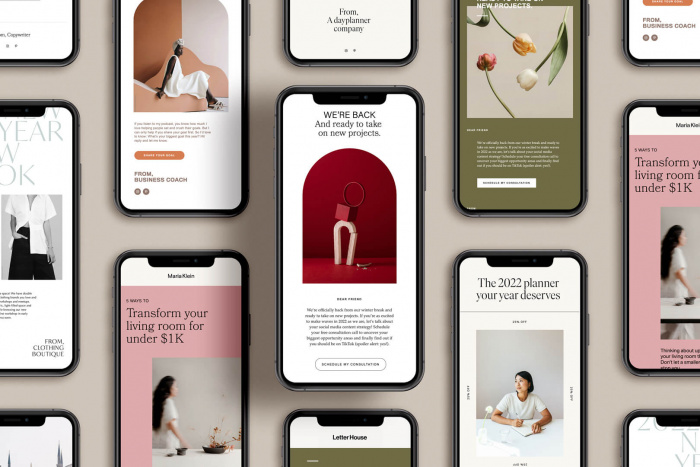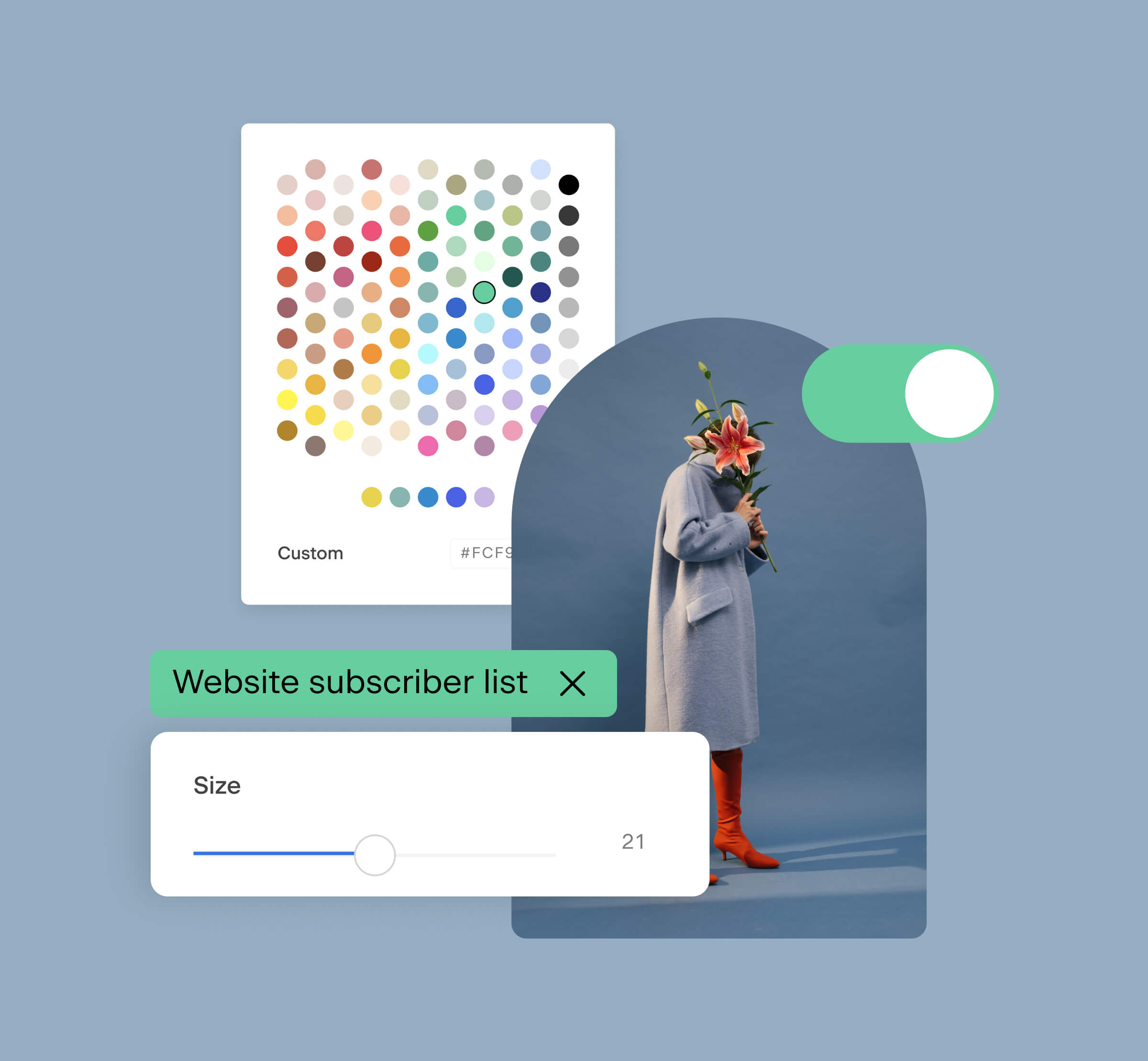How to build a coaching sales funnel
Table of Contents Jump to:
Jump to:
Table of contents
TLDR: Looking to expand your coaching client base? Learn how to create and optimize the perfect sales funnel to find even more clients interested in your coaching services.
When looking for help maximizing their potential, clients search for business coaches to help them. Whether they want to improve their processes or simply find a way to reach their goals, your clients are looking for a coach to lead them through their journey.
And when you’re looking to grow your professional coaching business, reaching your goals and smart decision-making is just as vital for you as it is for your clients. Consulting and coaching services have soared in popularity in recent years, making it harder than ever to stand out among the crowd.
How do you break through the noise online, effectively market your coaching business, and maximize your potential? We’ll share a critical decision-making framework that can help: the sales funnel.
Learn what a sales funnel is, why every coach needs one, and how to create your coaching sales funnel in five simple steps. We’ve even got a few real-life examples of coaching sales funnels in action to inspire you.
What is a sales funnel for coaches?
The sales funnel is a fundamental building block of any good marketing strategy. It includes every step of the journey your client take before converting into a paying client.
Every person who interacts with your coaching business is a part of a funnel. Think of sales funnels, or marketing funnels, as an overarching strategy to maximize your conversion rate and bring more value to your business.
The sales funnel starts long before new clients reach your landing pages and start typing in their information. The earliest stage of the sales funnel starts when a client becomes aware of a problem you can solve. For example, if a client knows they need to create a business plan, but don’t know where to start.
The funnel continues even after a client has booked their first service. An effective sales funnel will help existing clients spread the word about your services and refer new clients to your business.
5 Stages of the sales funnel
Stage 1: Awareness. In this stage, potential coaching clients have realized there’s a need for coaching or consulting. Your goal here is to spread the word about your coaching business and how you can help solve an ideal client’s problems. This is all about brand awareness.
Stage 2: Interest. Clients are actively looking for a solution but may still need time to decide. At this point, it’s important to generate leads (freebies are a great option) so you can quickly contact people who have expressed interest in your business.
Stage 3: Consideration. Clients are deciding between different coaching services and zeroing in on the best program to fit their needs. They may have even compared coaching programs based on price or availability. At this stage of your sales funnel, it’s your responsibility to make your coaching service stand out amongst your competitors. Emphasize how you address the pain points of potential clients.
Stage 4: Conversion. They’re ready to make a final decision at this stage, and if you do everything just right, they just might choose you. Make it as simple as possible for a paying client to get started with your coaching program.
Stage 5: Loyalty and advocacy. Many coaches forget the loyalty and advocacy stage. But this part of the process is one of the best tell-tale ways to determine if your sales funnel works. A coaching program and sales funnel should help facilitate a positive relationship with your current clients that encourages them to recommend you to new customers.
One thing to remember is that sales funnels are precisely that, funnels. As you move through the sales funnel, fewer people will make it past each stage. Don’t lose hope! Build a simple sales funnel that quickly helps you filter qualified leads and ideal clients so you can best focus your time, effort, and ad spend.
Building a sales funnel might seem overwhelming at first, but it’s well worth the initial work. Don’t skip on outlining yours.
Do you need a sales funnel?
The short answer? Yes. Every digital marketing strategy should have a sales funnel framework in place to create a solid pipeline of potential clients.
Sales funnels for coaches are especially important right now—reports reveal that the market for online coaches will grow to over $4.5 billion by 2030. To get your coaching program to stand out in an increasingly competitive landscape, you need to create a standout marketing strategy (which includes a sales funnel).
A coaching sales funnel is the perfect lead-generation tool to help attract people to your coaching program and convert leads into paying clients. Setting up a marketing strategy without one is like going to the grocery store without a shopping list. You may eventually get everything you need, but it will take you much longer than necessary, cost you more money, and you’ll probably forget something along the way.
Setting up even a simple funnel can help convert leads at a higher rate than blindly relying on social media posts and the occasional sales call. After you’ve done the initial groundwork, a well-executed sales funnel can do most of the hard work for you—and you can even automate the process. This will help bring coaching leads to you with minimal ongoing effort, serving as the perfect entry point for your ideal clients.
So, let’s dive into how you can build your sales funnel.
Build a high-converting coaching sales funnel with Flodesk Checkout
Flodesk Checkout’s powerful sales, checkout, and delivery pages will have coaching clients coming back time and time again.
5 Steps to creating a sales funnel for your coaching business
Now that you know what a coaching sales funnel is and why you need one, let’s talk about the practical steps you can take to build a coaching funnel that will take your business to the next level. In five simple steps, you can start growing your clientele—and your bank account.
1. Identify your target audience
The first step to creating a great coaching funnel is identifying your ideal clients. Define the coaching services you provide, the price point, and how you want to deliver your services. All of this will help define your target audience better.
As silly as it may seem to write down a list of your dream clients, it’s crucial for setting up the awareness stage of your coaching funnel. Having a mental picture of your ideal client will allow you to tailor every piece of your digital marketing to fit those customers. We even do this at Flodesk!
Are you a life coach who wants to help working moms find work-life balance through remote coaching sessions? Your coaching funnel should reflect that. Are you a personal trainer or health coach hoping to meet with clients three days per week in a gym? Align your marketing strategy so people interested in the services you provide can find you.
You can only build the rest of your coaching funnel if you identify a target audience first. However, remember that your target demographic needs to be broad enough to maintain a meaningful audience at the later stages of the funnel after people fall out of the awareness stage.
2. Build awareness
Once you’ve identified your ideal client, the next phase is building awareness for your coaching program and areas of expertise. It’s natural to want to skip ahead to offer a lead magnet like a free consultation or to bombard your social media followers with messages about your coaching services. However, at this stage, most of the people you reach are what we consider cold traffic, which means they have yet to learn who you are.
You’ve likely experienced a cold sales call or email, especially on LinkedIn. If you use it frequently, you’ve likely gotten an InMail from some salesperson you’ve never met asking you to call them to talk about a service you’ve never heard of and were never interested in. That’s cold traffic; for the most part, you want to avoid this.
So how can you build awareness in your coaching funnel and warm up some of those cold leads? Create content. Valuable content is important for helping coaches like you break through to build brand awareness in your niche.
Here are a few content suggestions to get you started:
- Blog content. A blog post can help you highlight your expertise on topics an ideal coaching client would be interested in. You could write about myths about spot training or why top entrepreneurs rely on business coaches.
- Social media posts. Build awareness by posting regularly on the platform(s) your audience uses, whether that’s Facebook, Instagram, TikTok, Twitter, LinkedIn, or Pinterest.
- YouTube videos. YouTube videos can be a great way to show off your personality, which is crucial for advertising your professional coaching services, whether you’re posting on your own YouTube channel or participating on a popular channel in your market.
- Podcasts. Similar to YouTube videos, hosting or being a guest on a podcast where you discuss topics relevant to your ideal clients can be a great way to spread awareness of your business.
- Whitepapers. A whitepaper is an informational document highlighting a good or service in great detail. You can create one to outline your coaching services and how you can impact clients.
You don’t need to create content for all of these things. In fact, for small business owners, it’s best to invest your time and effort into one or two areas where you are most likely to make an impact on your ideal client. That’s why you should establish your target market before moving on to the next steps of the sales funnel.
3. Create a great lead magnet
Creating a lead magnet is one of the critical elements of a coaching sales funnel. Lead magnets are those enticing freebies that you’ll usually find on a website or sales page to get you to enter your contact information so someone can follow up with a sales call or email marketing.
When designing your lead magnet, remember that your traffic has gone beyond the awareness stage and into the consideration stage. This means they have a problem and are now looking at your website’s landing page, hoping to solve it.
Your lead magnet should focus on solving that specific problem quickly and easily. Keep your landing page simple and on-point, without the fluff. Instead, use a direct and efficient call to action (CTA) highlighting why visitors should give you their contact information and what they will get in return.
No one wants to feel like they’ve subjected themselves to a barrage of unwanted promotional emails for nothing, and they’ll unsubscribe quickly from your list if that’s the case. So work to build a lead magnet your target market will enjoy signing up for.
Looking for inspiration? Check out 11 examples of lead magnet ideas for coaches. We’ve got a few others here that you can use, too:
- How-to guides. A lead magnet that gives detailed instructions or a tutorial on how to do something important to your ideal client.
- Problem-solving checklists. Examples include a morning routine checklist or a list of positive daily habits.
- Free quizzes. This lead magnet can do double duty helping you find more detailed information about your website visitors and create qualified leads. Make your quizzes short and engaging.
- Free discovery calls. If your business requires additional selling, using a free call as a lead magnet can help you get on the phone with new customers and get more information.
- Workbooks. A workbook lead magnet gives potential customers a taste of what it’s like to work with you, so make sure it makes a great first impression.
Whichever lead magnet you choose, remember that it’s only as good as the landing page it’s on. Your clients want to visit a beautiful website that is enjoyable to navigate and simple to understand. Optimize your landing page so users are excited to opt in and receive their freebie, which will help increase your conversion rate.
You may need to set up multiple landing pages to target different segments of your market with a unique lead magnet instead of taking a “one size fits all approach.” While it may involve some extra initial work, the process can be simple with a tool like Flodesk Checkout. It allows you to quickly customize stunning templates and make unique versions of each one. And it’s worth it in the end to generate more interest in your freebies.
4. Maintain a relationship
Your lead magnet should solve a problem for your leads, but it shouldn’t solve every problem for them. You need to give clients a reason to opt in, stay in touch with you, and eventually pay for your services.
Use email marketing to keep the conversation going with new leads. The key to great email marketing for coaches is to differentiate yourself from other coaches in the market. Since the consideration phase of the marketing funnel is where your audience will compare solutions, your email nurture sequence should highlight the reasons why a client should choose you over any other option.
Additionally, your opt-in page should tell subscribers what they can expect from you. Explaining why, how, and how often you plan on emailing your subscribers can help build trust.
We suggest using some of these ideas for your email marketing throughout the sales funnel:
- Deliver your freebie via email
- Send an automatic introductory email to new leads
- Provide unique and exclusive content to email subscribers
- Offer a short-term introductory discount
- Repackage a high-performing piece of content like a blog or YouTube video
- Share a client testimonial
- Offer a giveaway
- Request new client referrals
The possibilities are endless. And with tools like Flodesk Email, you can make your emails stand out in a crowded space.
Stand out with Flodesk Email
Use Flodesk Email’s stunning templates to grow your list with engaging and beautifully designed emails.
5. Sell your services
All of your awareness-building content, email marketing, and relationship-building efforts so far have led to this point. The final moment when a client chooses to book your services. Now, you want to fine-tune your checkout pages so users can quickly and confidently purchase from you or book a session.
To warm any final cold feet that your website visitors may have, create compelling CTAs that drive home the urgency of completing the process and becoming your client. As with every other part of the coaching sales funnel, your checkout page should re-emphasize the problem your user experiences and how your services can help them to solve it.
The most important thing to remember while building your funnel is that consistency is key. Everything from your definition of your target client to content creation, relationship building, and your final checkout page should align.
Eliminate any unnecessary steps that don’t help drive your clients through your funnel. This mindset will optimize your marketing funnel and make sure you’re always moving forward—not wasting time or budget on meaningless marketing tactics.
An example coaching sales funnel
Let’s look at a practical example of each of the steps we’ve discussed using a real coach’s marketing funnel so you can get a better idea of these best practices in action. Flodesk member, Amber Rae, is a world-renowned author, illustrator, and wellness coach who uses Flodesk Checkout to sell her work.
Let’s go through the five steps of our coaching funnel framework and how Amber Rae puts each one to work.
Defining target audience: Amber’s target clients are people looking to unlock their creativity and reach their full potential by tapping into their emotions. She makes this clear in a very short blurb at the top of her website.
Building awareness: Amber uses social media posts like this one to build awareness around her business. She has also given multiple TED talks and been featured in press outlets like the New York Times and Fortune, among others. She’s using a variety of outlets to get her name out there.
Creating a great lead magnet: Amber Rae utilizes several lead magnets to promote her business. This particular example is a Flodesk Checkout page offering a free 90-minute journaling workshop. Notice that the image she uses for this lead magnet is consistent with the Instagram photo from the awareness stage.
Maintaining a relationship: As part of her funnel, Amber Rae offers a weekly newsletter to give subscribers a “weekly dose of wonder.” The signup process is quick and simple, requiring only an email address. The CTA makes it clear that a subscriber will receive a weekly email and emphasizes the appeal of subscribing. We could all use a dose of wonder, right?
Selling your services: Amber Rae’s checkout pages for each product restate the intended audience, the problem visitors may be facing, and how Amber can help them solve it. Looking specifically at her Creative Alchemy workshop checkout page, the initial CTA calls out to soulful creators and explains that Amber can help support them in building their next project.
Further down the page, Amber goes into more detail about the program and why you’d want to be a part of it. Amber features use cases for the product using rhetorical questions and directly addresses her audience’s most common difficulties. She then discusses how her program can help visitors overcome those hurdles.
Amber Rae passes every stage of the marketing funnel. And it has worked wonders for her business. Want the same? Follow our best practices guide.
Create your sales funnel with Flodesk
Ready to start building a beautiful coaching funnel that attracts the right clients to your business? Flodesk Checkout offers simple-to-use templates that make it easy to create stunning sales and checkout pages that help convert your website traffic into leads and coaching clients.
Combining the power of Flodesk Checkout with Flodesk Email can help you maintain relationships with your subscribers by bringing together the power of sales and continual outreach. Get started with a 30-day free trial of Flodesk Checkout.












